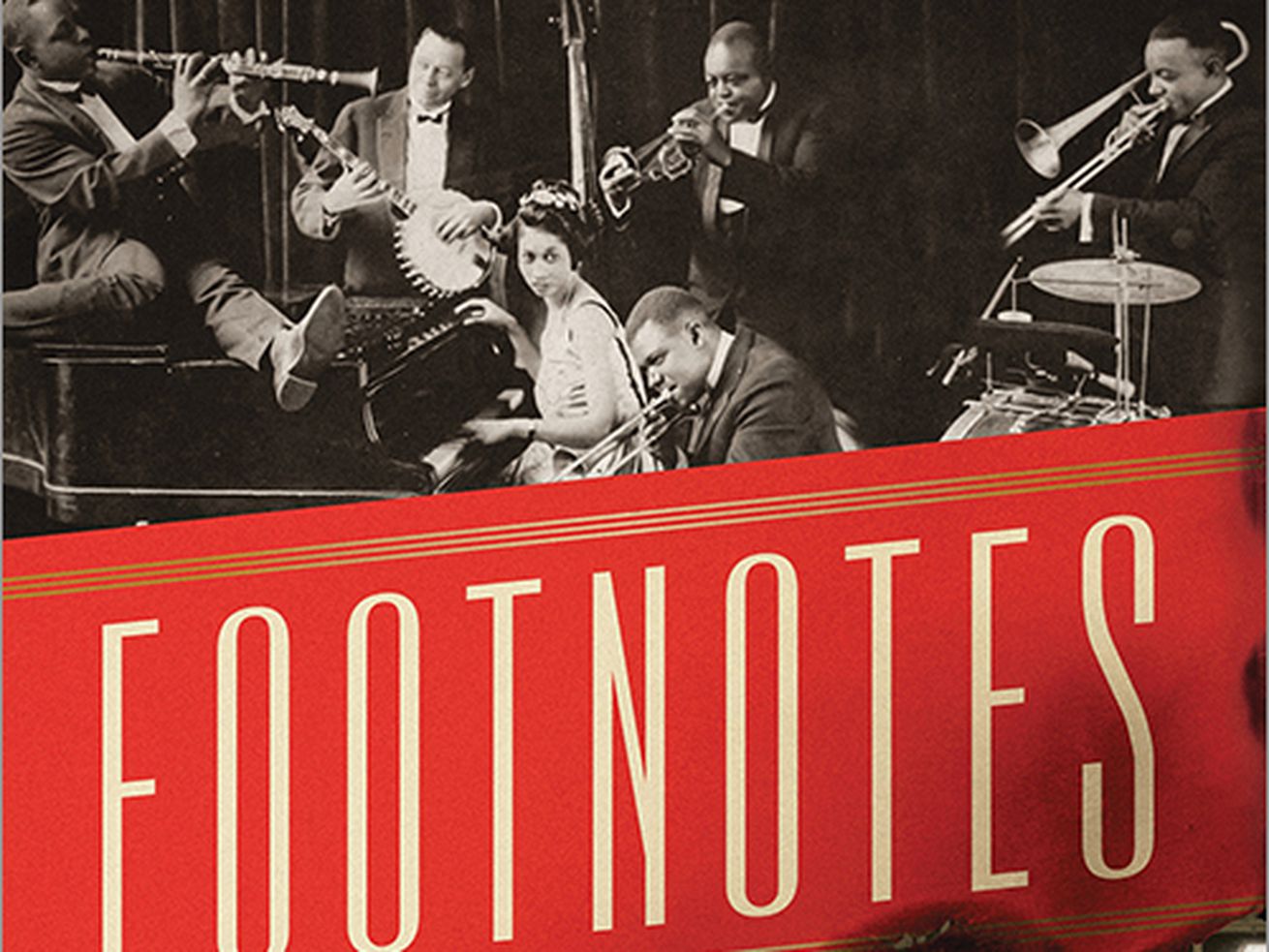
‘Shuffle Along’ defied the racism of the day, becoming Broadway’s first all-jazz musical. It changed musical theater and showed white audiences would pay Broadway prices to see Black performers.
Caseen Gaines didn’t know anything about the forgotten 1921 production of “Shuffle Along,” the groundbreaking hit musical that brought Black entertainers to Broadway, until he saw George C. Wolfe’s 2016 reimagining of the show.
“Shuffle Along, or The Making of the Musical Sensation of 1921 and All That Followed” celebrated and dissected that earlier show. But it abruptly closed when one of its key performers, Audra McDonald, became pregnant and left the show.
/cdn.vox-cdn.com/uploads/chorus_asset/file/22528483/9781492688815.jpeg)
Sourcebooks
Gaines attended the penultimate performance. Seeing a show that celebrated this landmark musical meet a premature end felt “like justice being denied once again.”
“I went home and started Googling around like most people do when they find something interesting and want to know more about it,” Gaines says. “Then, I fell down the rabbit hole.”
More than four years later, Gaines is the author of “Footnotes: The Black Artists Who Rewrote the Rules of the Great White Way” (Sourcebooks, $26.99), a deep dive into the musical and its multitalented and determined creators — playwright-comedians Flournoy Miller and Aubrey Lyles, singer and lyricist Noble Sissle and composer and ragtime pianist Eubie Blake.
/cdn.vox-cdn.com/uploads/chorus_asset/file/22523513/Sissle_Blake_Miller_Lyles.jpeg)
Maryland Center for History and Culture
“It was a perfect storm, and at the center of it were two comedians who were incredibly smart, witty and clever and two equally smart musicians,” Gaines says.
“Shuffle Along” defied the systemic racism of the day. Broadway’s first all-jazz musical, it changed the sound of musical theater and showed that white audiences would pay Broadway prices to see Black performers.
It helped popularize the Harlem Renaissance, ran for 484 performances before touring the country and launched or boosted the careers of Josephine Baker, Paul Robeson, Florence Mills, Lottie Gee, Fredi Washington and Adelaide Hall.
“There was a great story to tell not only about this moment in 1921 but also about how something that was so prevalent and significant became something that 100 years later is a footnote,” Gaines says. “The creators are just a few of the many Black Americans who forever changed this country and have been denied their due.”
Gaines sets his book against the backdrop of a recession, the aftermath of the global flu pandemic and the worst period of anti-Black violence since the Civil War. The play opened a week before the Tulsa Race Massacre, in which mobs attacked Black residents and businesses of the Oklahoma city’s Greenwood District, and two years after “a prolonged period of radicalized antagonism and violence known as the Red Summer.”
/cdn.vox-cdn.com/uploads/chorus_asset/file/22523521/Sissle_Chorines.jpeg)
Maryland Center for History and Culture
The musical’s plot was based on Mills and Lyles’ play “The Mayor of Dixie,” about two conniving men, Sam Peck and Steve Jenkins, who run for mayor of Jimtown. Whoever wins agrees to appoint the other as police chief. Differences arise, and their opponent in the race, Harry Walton, vows to end their corrupt reign. Amidst this, a love story unfolds.
It was the first Broadway musical to feature syncopated jazz and a chorus of professional female dancers. Its popular songs included “I’m Just Wild About Harry” (later a campaign song for 1948 presidential candidate Harry S Truman), “Love Will Find a Way” (Broadway’s first African American romantic musical duet) and “In Honeysuckle Time.”
Gaines’ research led to libraries including the New York Public Library’s Schomburg Center for Research in Black Culture, the Maryland Center for History and Culture and the Emory University archives. The show’s creators were celebrities, and their lives were well documented in the Black press.
Gaines says he relished discovering Sissle and Blake’s unpublished memoirs. He uses excerpts throughout the book.
“These were really helpful because there was such a richness in their voices,” he says.
/cdn.vox-cdn.com/uploads/chorus_asset/file/22523526/Caseen_Gaines.jpeg)
Johanna Calle
“Shuffle Along” was a chaotic mix of vaudeville, operetta and burlesque. It heralded a new form of musical. The jazz score was revolutionary and exciting, yet the show also relied on “the Southern comfort of antebellum humor and blackface,” holdovers from vaudeville minstrel shows.
“You can see how tenuous the construction of the show had to be for it to resonate with white audiences,” says Gaines, 35. “It’s a really interesting look at the delicate dance that people of color have to do in order to find mainstream success.”
After Broadway, “Shuffle Along” toured through 1924, in Chicago and other cities.
Gaines, who teaches English and journalism at Hackensack High School in New Jersey, says the story of Miller, Lyles, Sissle and Blake and their determination to succeed is as important today as it was in 1921.
“Sometimes, when you look at the footnotes of history, you find a more interesting story to tell about America,” Gaines says.
He says the story he unearthed is one of “racial representation, a story about living in ones authentic self as a means of gaining representation.
“It feels so relevant to me right now because I think there’s something very important in being reminded that this took place 100 years ago. If we are to ever break the cycle of systemic racism, we need to remember how long this fight has been and use that to act with increased urgency.”
